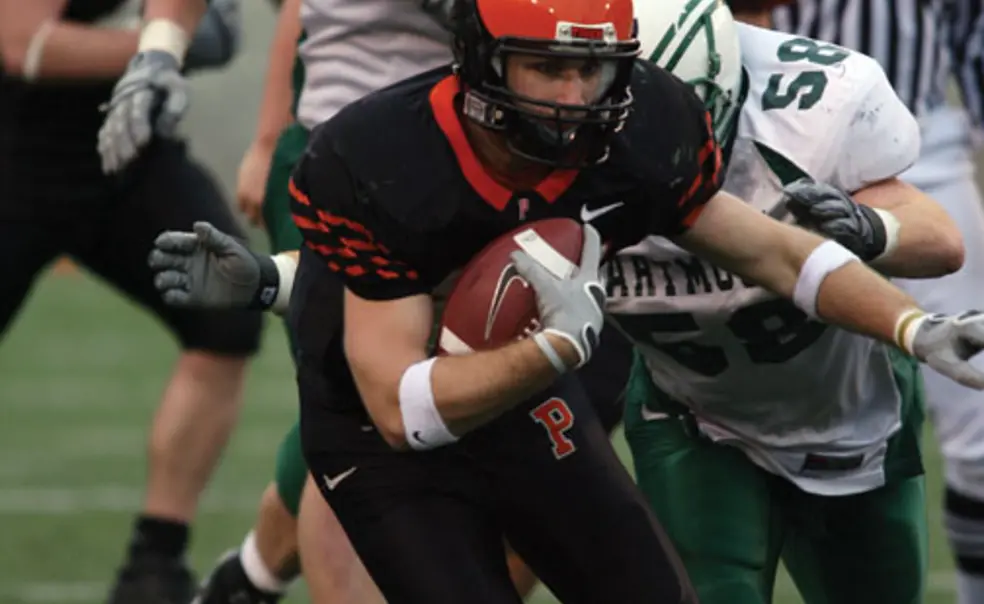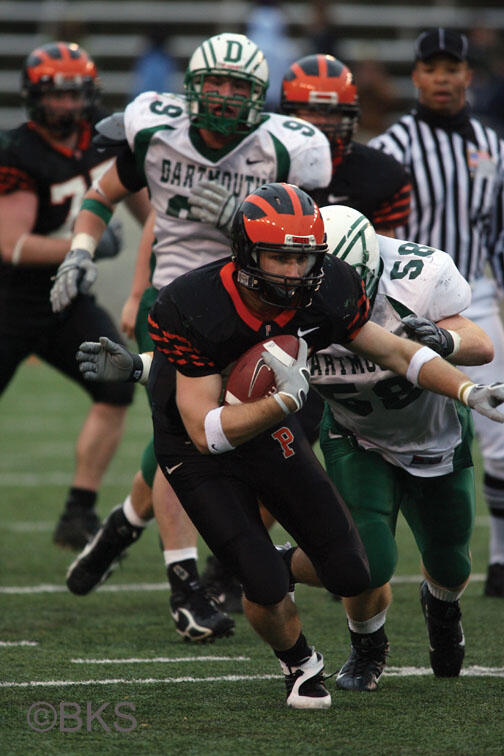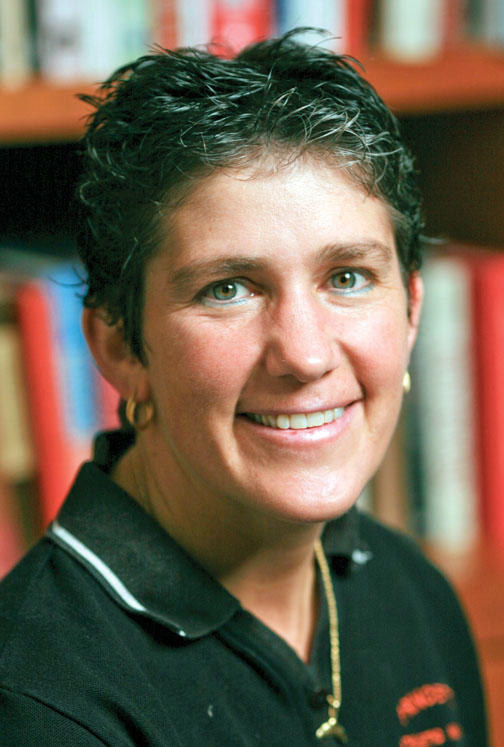Amid concerns, concussion awareness grows
One of the most thrilling Princeton football games of the last decade was a 27–17 victory over Dartmouth in the 2006 season finale, which earned the Tigers a share of the Ivy League championship. R.C. Lagomarsino ’09 rushed for 70 yards and received a game ball. Perhaps you remember it. Lagomarsino doesn’t.
The sophomore tailback left the game with a concussion and spent that night in McCosh Health Center. As he was being led into the locker room, Lagomarsino says, he had no recollection of even playing in the game. It was at least his second concussion of the year, although he had passed all the neurological tests and been cleared to resume playing.
Those who have suffered one concussion are more susceptible to suffering others, and for Lagomarsino, things got worse the following season. He was sidelined for a week after a concussion in a game against Hampton. Off the field, he began finding it hard to focus on schoolwork. He failed a math class and felt so lethargic that he began taking naps every afternoon. Although Lagomarsino went to training camp the following summer, he suffered more hits to the head and sat out his senior season.
Concussions have been in the news a lot lately. The NFL has responded to stories about former players who suffered lasting neurological damage during their playing days by announcing that it would hand out heavy fines, and even suspensions, for deliberate hits to the head. The problem touched the Ivy League in September after it was learned that Owen Thomas, a Penn football player who committed suicide earlier this year, had suffered from the early stages of chronic traumatic encephalopathy. Although Thomas never had been diagnosed with a concussion, his condition may have been caused by repeated blows while playing football, according to doctors quoted in a New York Times report.
In April, the NCAA issued a memorandum requiring each member institution to develop a plan that bars players showing symptoms of a concussion from returning to a game or practice that day. Princeton’s concussion-management plan, which has been in place for several years, was developed largely by Dr. Margot Putukian, the director of athletic medicine. Putukian, who came to Princeton in 2004 after 11 years at Penn State, has served on several NCAA and international panels that have developed head-injury guidelines.
“We are noticing [head injuries] more now,” Putukian says. “Our medical staff is better at looking for it, and our athletes are more aware of the consequences.”
At Princeton, all first-year players in “risk” sports — a list that includes football, men’s and women’s soccer, hockey, lacrosse, and a handful of others — undergo neurological tests that provide a baseline against which to measure any changes should they suffer a head injury later in their careers. Athletes also must sign an agreement promising to report all head injuries to a trainer.
If a player appears to suffer a head injury during a game or practice, a trainer conducts an on-the-spot physical evaluation as well as a series of neurological tests. Players are asked to balance on one foot, for example. They also might be given a series of three-digit numbers and asked to repeat them backward. Anyone who suffers a concussion must be evaluated by a physician and complete a series of more detailed neurological tests. Princeton is unique within the Ivy League in that all concussion tests are sent to a neuropsychologist for an independent evaluation.
Clearance to resume playing, Putukian says, also is influenced by such factors as the severity of the concussion, whether the athlete has suffered concussions before, and whether the athlete suffers from any other learning disability.
Coaches, Putukian says, are well aware of the dangers of head injuries. The players often are tougher customers. Among football players, blows to the head often are dismissed as “dings.” “Whoever coined that term — shame on them,” says former Tiger defensive end Tom Methvin ’09, who, like Lagomarsino, missed his senior season after a series of concussions.
Putukian tries to rebut the warrior mentality in preseason team meetings, and thanks in part to the increased publicity, the message seems to be getting through. “We’ve had a number of players now come to us and say they’re having a problem,” says Charlie Thompson, the head athletic trainer. “We used to have to seek them out.”














1 Response
John Lewis ’50
9 Years AgoConcussions concern
I am appalled to read “Amid concerns, concussion awareness grows” (Sports, Nov. 17). Where were the coaches, the medical department, the parents? After at least two concussions his sophomore year, R.C. Lagomarsino ’09 was “sidelined for a week” following a concussion his junior year while evidencing serious off-the-field symptoms. That’s it? And then he was allowed to participate in preseason training his senior year before finally “retiring.” This is not the NFL!
I can speak from experience. During football practice my senior year in 1949, I suffered a concussion and was uncon scious for about a half-hour. I didn’t play again that year and had a headache for several weeks. Then, two years later, I got “dinged” again while playing for a Navy team, and I thought my head would come off. Maybe, just maybe, after decades and decades, we are starting to learn. I very much hope so.